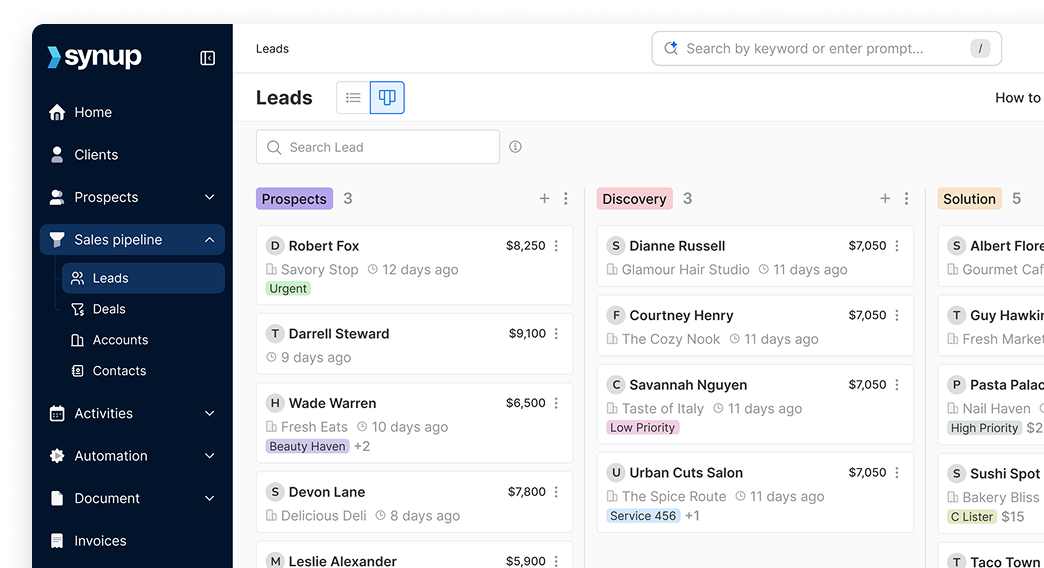How to Generate Ideas for Social Media Posts
Learn how to generate creative ideas for social media posts with our step-by-step guide, including proven strategies and techniques to develop unique and engaging content that resonates with your audience.
Coming up with fresh ideas for social media posts can seem like a daunting task whether you’re just getting started crafting your social media presence, or you’ve been scheduling social content for years.
We’ve got a few other tips that can keep you on the ball and your audience eager to double tap:
Determine what you want to achieve with your content, such as driving website traffic, conversions to revenue or meetings, increasing brand awareness or just connecting with a community of like-minded folks. You can change your mind, too – nothing has to be set in stone. As you get into the swing of crafting your social media content, you’ll find what works for you and what doesn’t.

Photo courtesy of Kvalifik
Keep an eye on current events and innovation in your industry. Bookmark anything new that’s worth writing about or quickly reposting in a story or on your feed. Which trends are currently influencing your industry? Use them as inspiration. A good place to start would be https://www.morningbrew.com/daily, where you can get updates on current events across industries. Be sure to also pay attention to what distinguishes your brand from similar products in the market. What can your product or brand do that sets you apart from others?

Photo courtesy of Jason Goodman
Do regular brainstorming sessions with varied members of your team to craft a content calendar. Make time to think about and organize your material by selecting social channels your business should focus on and content appropriate for each channel. You’ll need to organize contributors to your calendar and plan accordingly within the time constraints for each quarter. You can use project management tools for this, like Monday.com or Notion.so. There’s no shame in using a tried and true Excel sheet, either! Quick tip: using themes to craft your content calendar can help generate ideas month to month.

Photo courtesy of UX Indonesia
See what kind of content your competitors are posting by taking a look at their channels. By conducting competitor research, you can gain a better understanding of the market, identify opportunities and threats, and develop strategies to differentiate your business from the competition. Look for companies that offer similar products or services to your own, or that target the same customer base. Look at your competitors' websites, social media accounts, and online reviews to understand their digital strategy. Pay attention to the type of content they share, the design of their website, the tone of their messaging and the channels they use. Identify any gaps in the market that your competitors are not addressing, and consider how you can fill those gaps with your own products, services and messaging. Competitor research is an ongoing process that requires constant monitoring, updating and testing to ensure your findings are relevant and accurate.

Photo courtesy of Priscilla Du Perez
Check out Google Trends to see what’s (literally) trending by exploring keywords for your industry. You can see how popular specific keywords are, and compare the popularity of different keywords to find the best ones to use in your content or marketing campaigns. This also lets you see consumer interest changes over time, and gives you an idea where interests may be headed when planning future posts.

Photo courtesy of Lianhao Qu
To find out what others are talking about on social media, use listening tools. Listening tools are software platforms that help businesses monitor and analyze online conversations, mentions, and reviews about their brand, competitors, and industry to give them a leg up on their marketing strategy. Listening tools are super helpful as they can classify mentions of your brand as positive, negative, or neutral. This can help you understand how people feel about your brand and identify areas where you may need to improve.You may use this to gain a sense of the most well-liked subjects and to generate material that is both pertinent and interesting. When you’ve launched new campaigns, you can use listening tools to track the performance of them by monitoring for mentions of specific hashtags or keywords associated with them.

Photo courtesy of Claudio Schwarz
Use prompts on your Instagram story, LinkedIn or Twitter to figure out what your audience is interested in hearing about. You can use prompts to ask open-ended questions that encourage your followers to share their thoughts, opinions, or experiences, encourage your followers to share their own content, and repost the best submissions to your own social media profiles to optimize engagement. Prompts are great for running contests too! Your followers can submit their responses for a chance to win a prize. Prompts can be a fun and effective way to increase engagement and foster a sense of community on your social media profiles. Keep in mind that the prompt must align with your brand's tone, message and overall strategy to be effective. Additionally, it is important to monitor and reply to the responses to show you are paying attention and care about your community.
Follow other brands and influencers in your industry to see what kind of content they are creating. This will help you find inspiration from different sources. For visual inspiration, you can also craft a Pinterest feed.

Photo courtesy of Jasper Garratt
Finally, let everyday life guide you. As we see on LinkedIn and other social channels, consumers want to see that there are people behind brands with values and dreams, driving them to create new products. Let the culture of your brand inspire how you reach out to your customers and build your posts with an intentional human feel. Customers will become invested and more likely to follow for more content.
—
Want to know how to get started creating unique content on social media? Synup can help your business reach more customers on social media by uniting your digital marketing on one platform. Yeah, that’s right – we really do it all. Start a conversation with us today to find out how we’re making social media and digital marketing stress-free with maximized ROI for your business.
Follow us on Facebook, Twitter, LinkedIn or Instagram to hear more from us.




